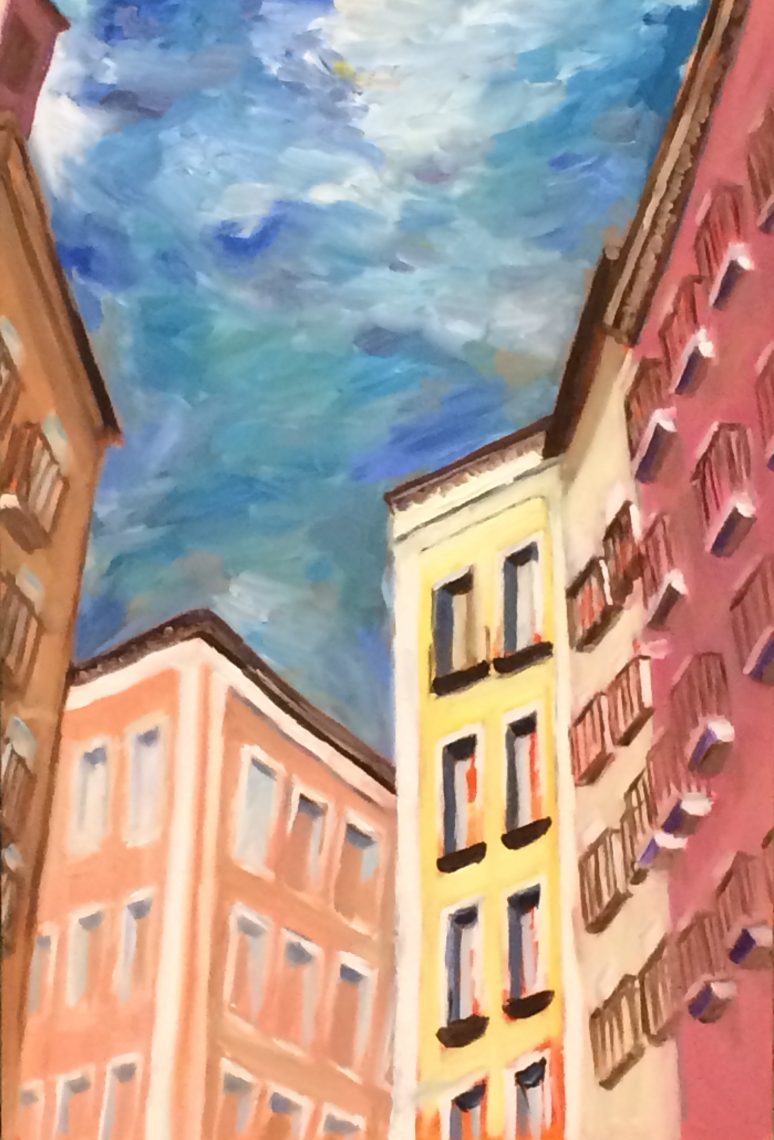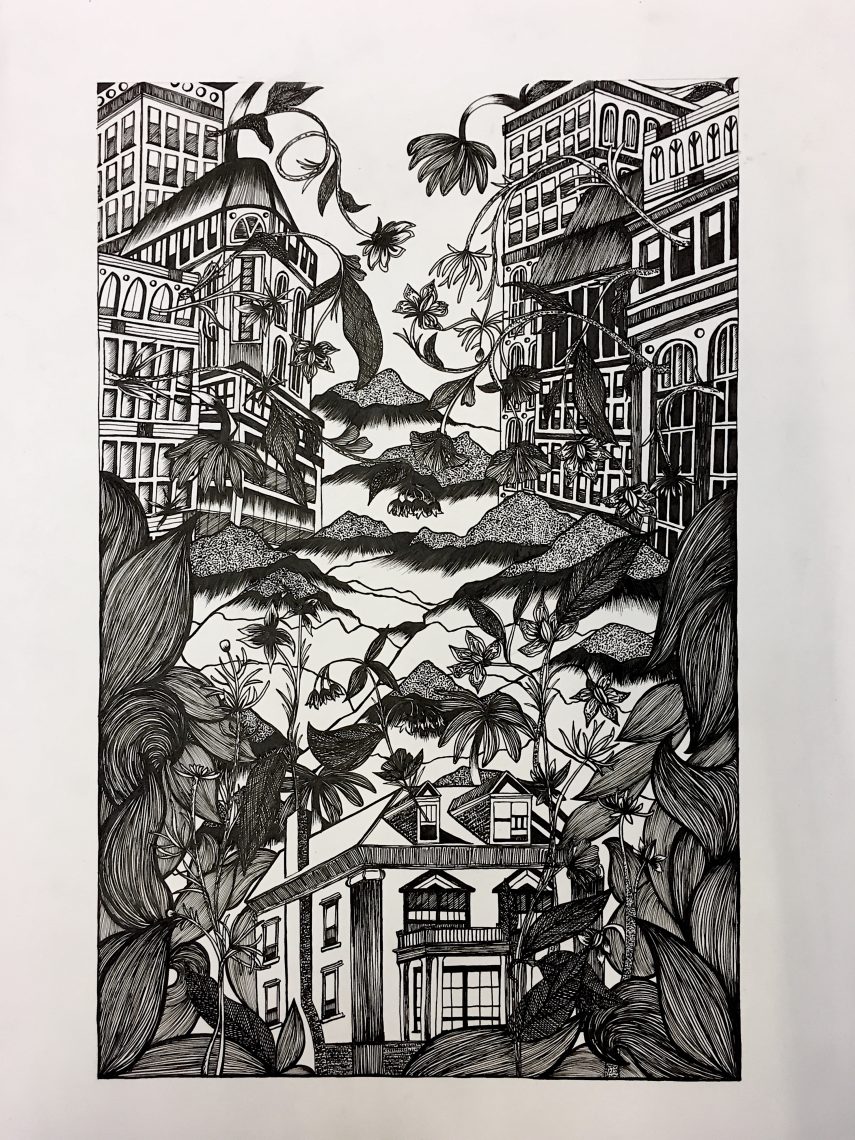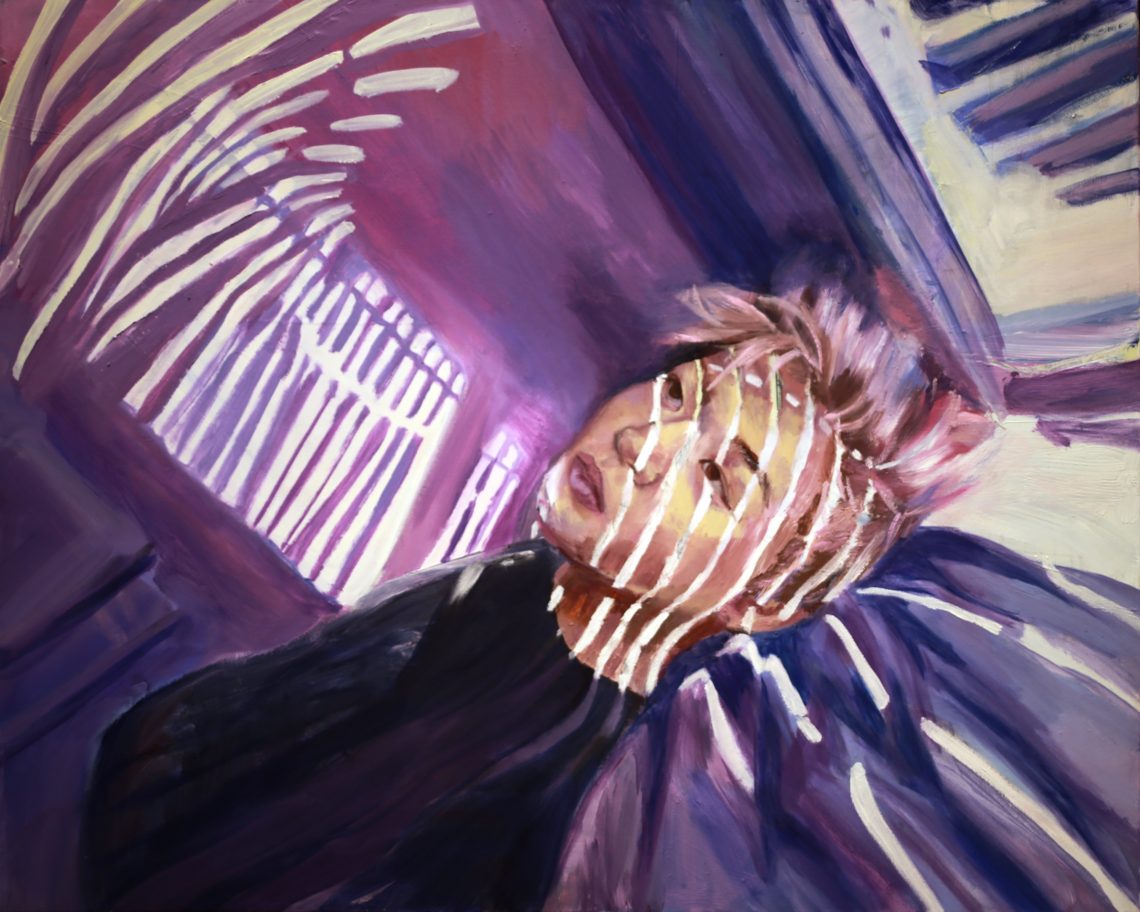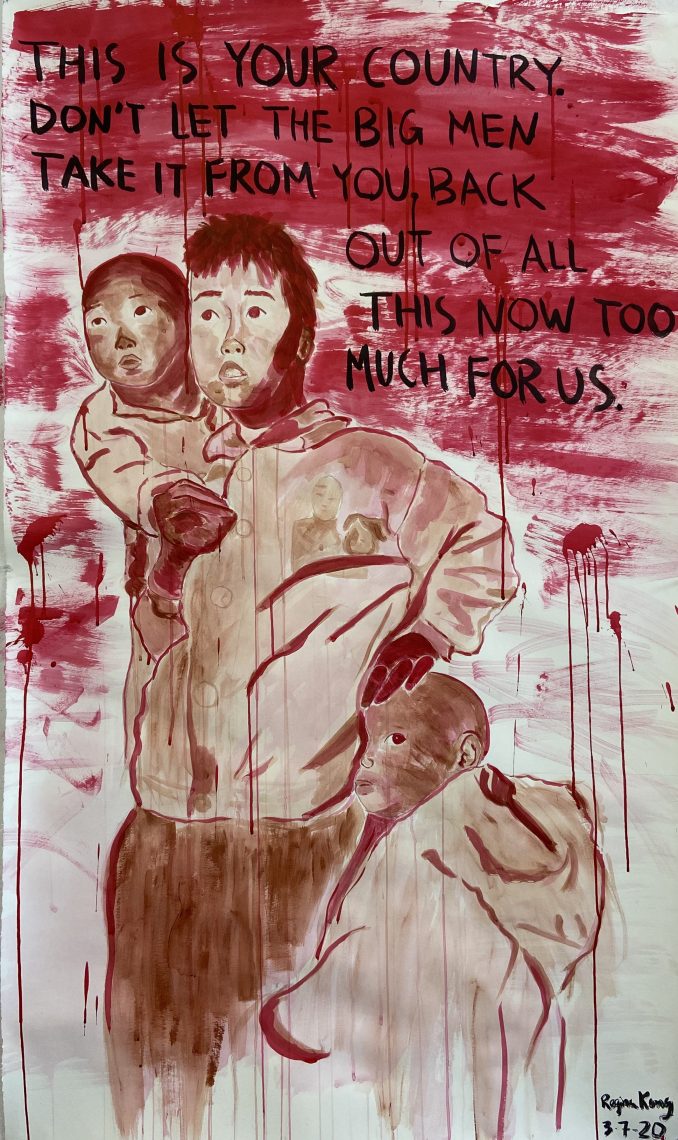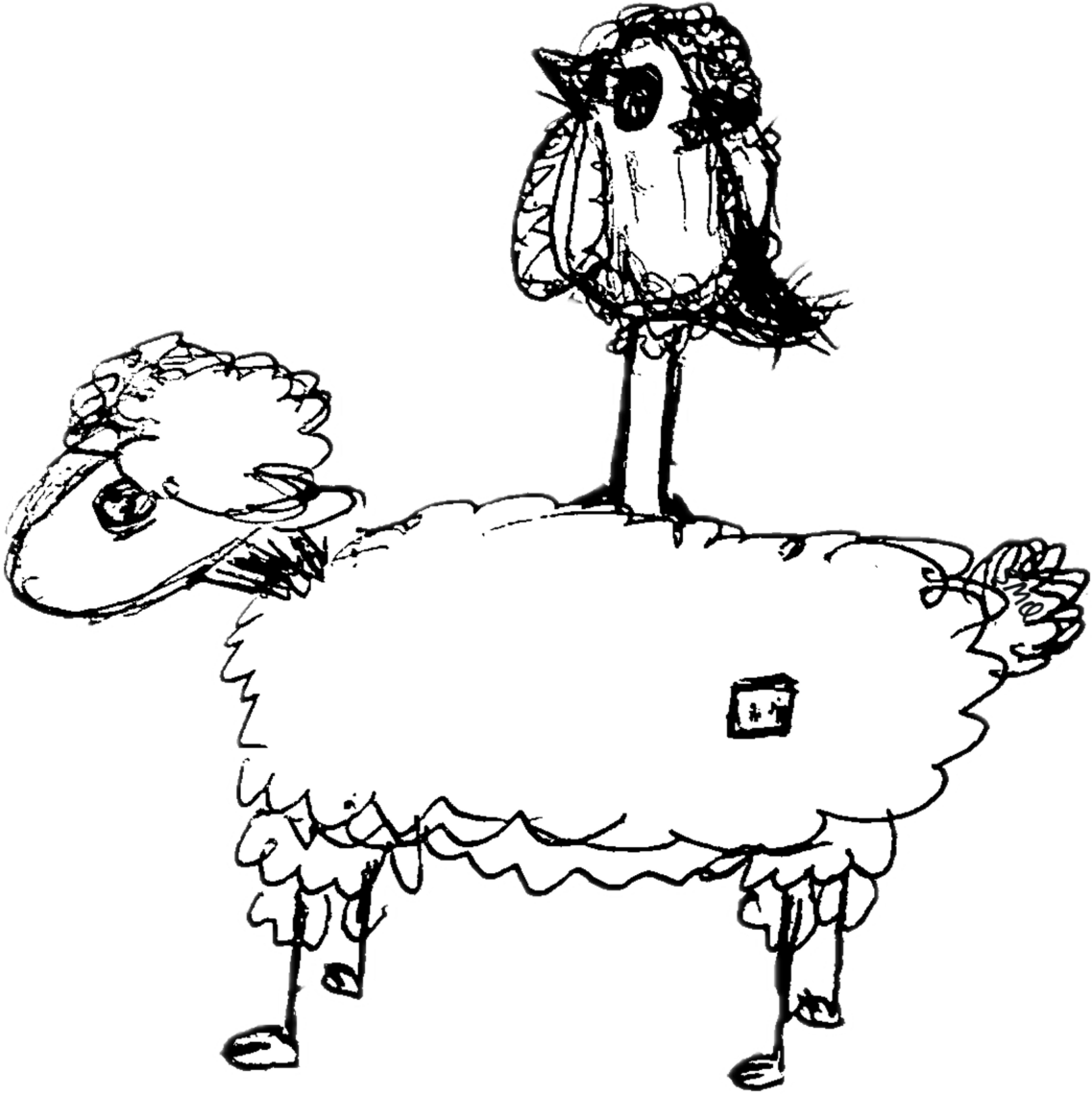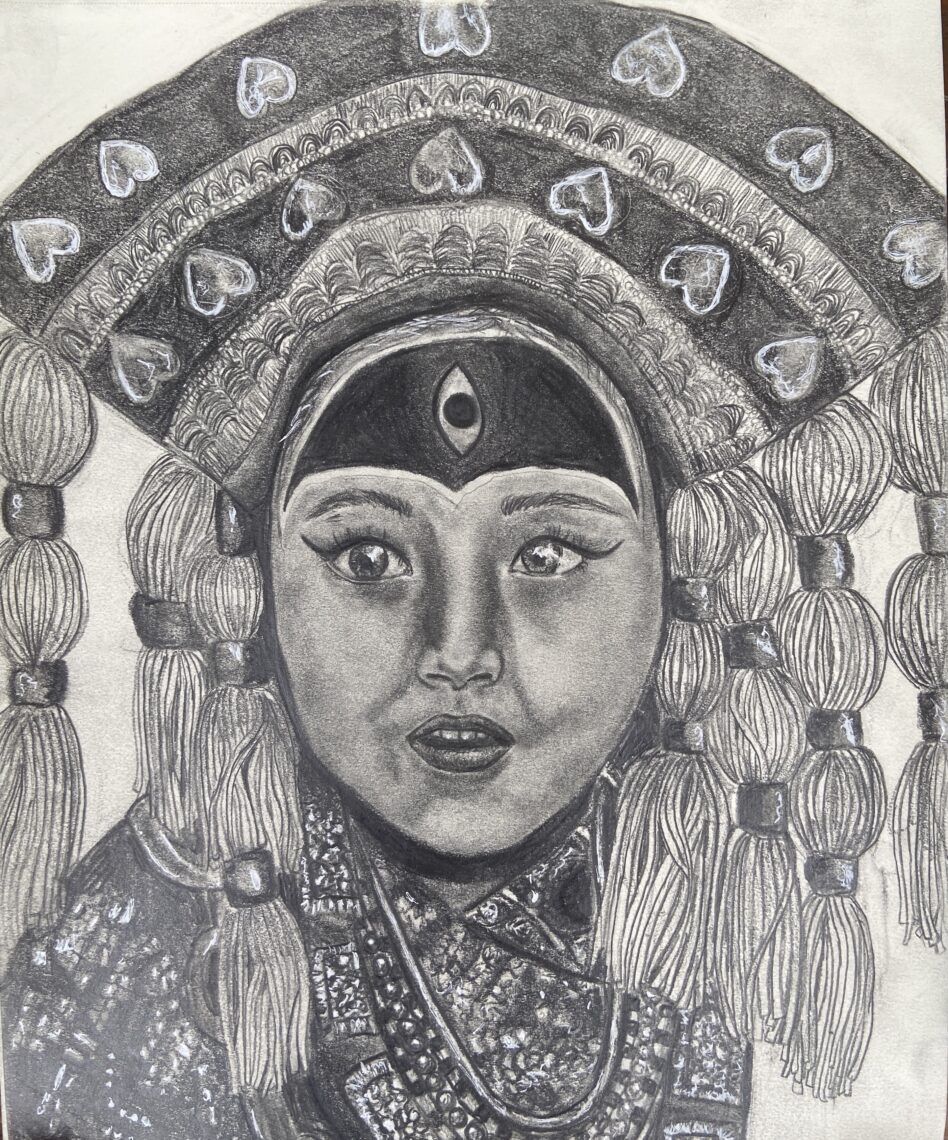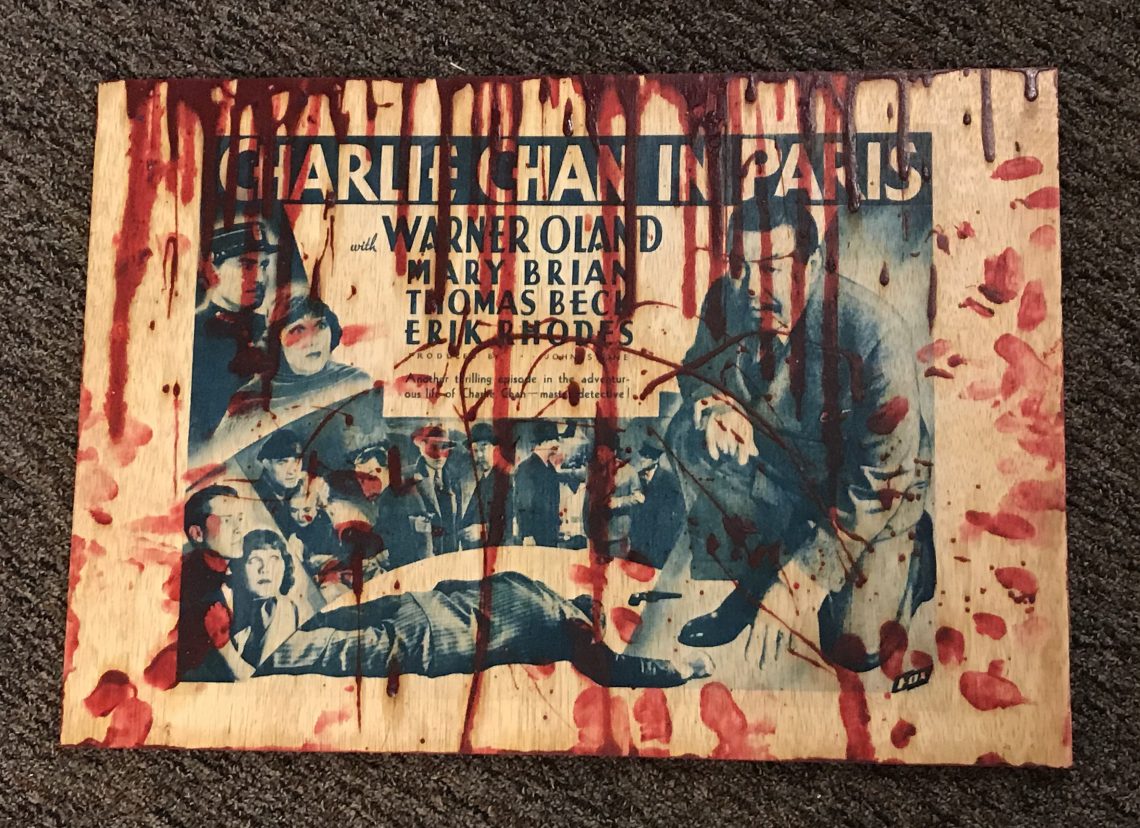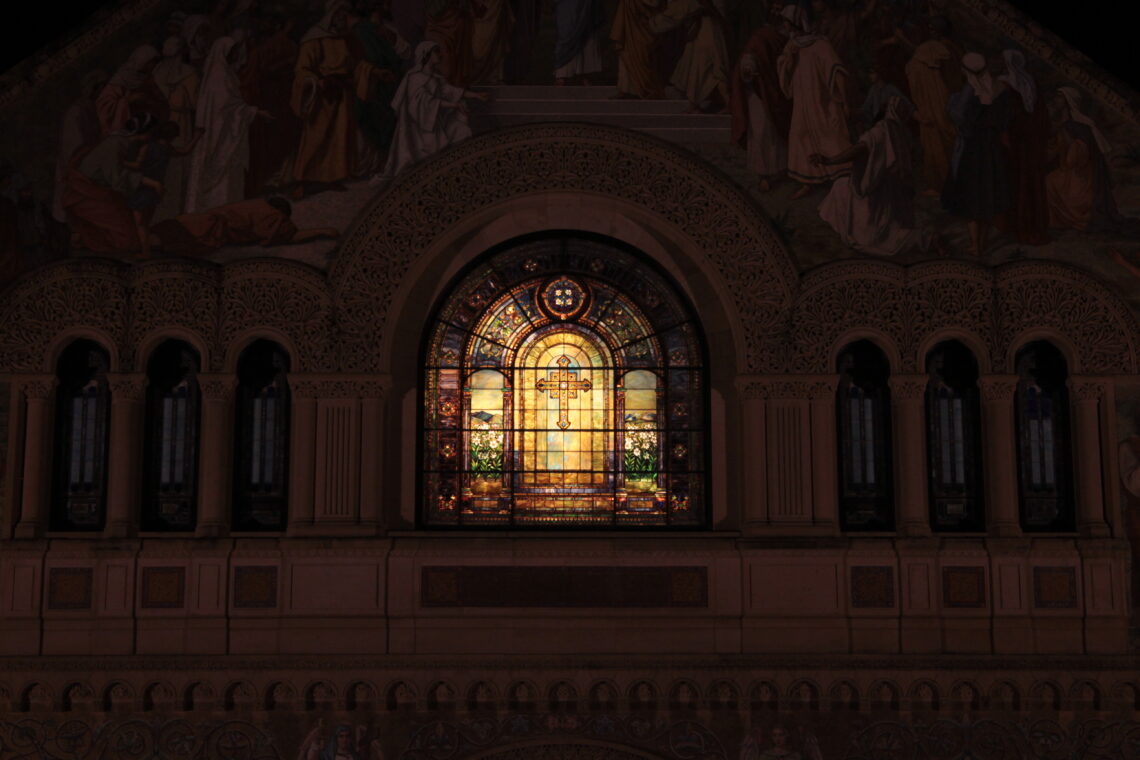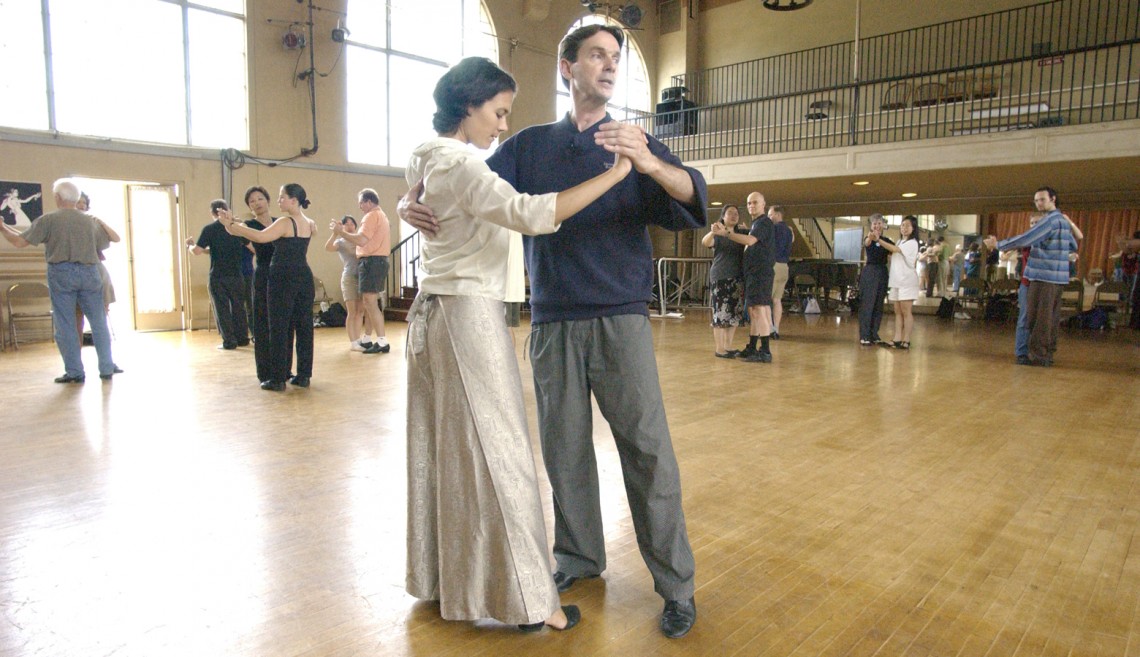
L.A. Cicero
A WALTZ THROUGH THE LIFE OF RICHARD POWERS
We wandered into the welcoming room on a gorgeous, quiet Thursday afternoon to discover the attentive, kindhearted Richard Powers smiling and ready to share his life with us. The dancer’s passion is fantastically evident in every corner of his office. His walls are covered with vintage posters of dance events and oil paintings with broad, expressive brushstrokes of the professor himself in slacks and button-ups in slightly blurred action. The shelves are piled with antique canisters of floor polish, which Powers later excitedly told us were once sprinkled on dance floors and danced on to rub in. Small CDs are stacked everywhere, labeled by hand in a small scrawl with names of dances and marked up with circles and highlighting. This is the kind of contagious passion that makes Powers’s students excited to come to class every week.
Powers’s Social Dance series, in fact, is easily one of the most popular course offerings at Stanford University. Still, Powers modestly recognizes that most students out of peer pressure rather than pure academic interest. We all laughed when he described telling students on the first day that “half of them probably are dubious if they want to be there but their best friend told them they had to take the class,” but even the initially hesitant students leave the class recommending it to others. Students who want to take Social Dance I, an introduction to common partner dances, have to be ready the second enrollment opens to secure a spot. (“That’s right,” he chuckled, “midnight.”) Part of what makes Social Dance so sought-after is the personal touch Powers added when he took over the position to teach the class. He recalled, “I did redesign the Social Dance courses to better meet the needs of the students as I saw them, as opposed to straightforward just teaching steps.” Instead, he instructs students in communicating with partners and even extends lessons in dance to lessons in life. Veteran students claim that in addition to making you a better dancer, this class makes you a better person.
Yet despite his current passion and skill at practicing and teaching dance, Richard Powers wasn’t always interested in dance. When he was a student at Stanford himself, Powers studied engineering and design, initially working toward a career in design and building. His interest in graphic design led him to calligraphy, which he practiced with Japanese and Chinese brushes in European-style lettering. He recounted, “I realized to understand Asian calligraphy better I should take T’ai Chi,” a meditative Chinese martial art. This engaging form of movement, kinesthetically satisfying and rewarding, was a revelation for him and he soon began learning Kendo, a Japanese form of fencing. This introduced Powers to playing off the spontaneity of others, a key component of social dance. “As you can imagine, that led to dancing,” he recalled to us with a glimmer in his eye.
When Powers first started learning dance, however, the teachers and material available were limited. He found historic dance at the one place it was being taught on the East coast, Castle Hill Early Music and Dance, and immediately fell in love with dance. We all intently listened as he told us, “I found it was the perfect combination of everything I loved,” with incorporations of history, dance and early music. But even then, Powers told us, “historic dance only meant Renaissance and Baroque,” and ragtime was considered “too much fun.” It wasn’t long before he discovered his current specialty, 19th century and Ragtime Era dances, where, as he affectionately described, “instead of dancing with you partners who were six feet away, you were dancing with a partner in your arms.” But with nobody teaching these dances, Powers had to form his own vintage dance group and instruct his fellow dancers himself.
Between developing vintage dance and coming to teach the newer styles at Stanford, Powers spread his knowledge and enthusiasm of social dance in countries throughout Europe and across the United States. Now, largely as a result of Powers’ passion and outreach, the Stanford dance community has flourished. When we asked him about his favorite dance, he excitedly began listing great things about the cross-step waltz. It was hard to stifle the urge to go try it as he talked about how “it’s easily creative” and “has a wonderful easygoing, almost relaxing but highly engaged energy level.” It is becoming the dance of the 21st century and is even exploding in Beijing and areas in Europe.
While he admitted, “I got into teaching reluctantly,” Powers and his students couldn’t be happier with how things ended up. Besides being an incredibly fun and memorable class, Social Dance and the lessons Powers incorporates into it make his students better people. Powers noted the age of technology and the resultant decline in physical interaction and exposure to diverse ideas and ways of thinking. “I think we also have a deeper craving to be balanced,” he thoughtfully noted, and his historic dance provides a unique opportunity for people to move, and in a uniquely social environment, fulfilling that craving he believes exists in all people.
Not only does Powers offer students great social interaction, but he also offers them the skill of adaptation. As he’s heard from his former students who now work at Google, the ones who succeed “are the ones who can quickly adapt to a changing situation, on their team or elsewhere,” and he declared proudly to us that “they say they learn how to do that in my Social Dance classes.” While it may seem like a strange connection, students learn this type of quick thinking and reaction while working with different partners and dances. As freshmen hoping to take the Social Dance classes ourselves, we were thankful to hear that Powers plans to remain at Stanford, and many more students will get to learn these skills.
Throughout our conversation, Richard Powers spoke with an air of contentment and optimism, which was enforced when he cheerfully reflected on his thoughts on life and happiness. His advice to himself, while he recognizes it may not apply to everyone, is “to see where the path at the moment is diverging or is heading as opposed to sticking to what you think the path should be.” Though when we asked him if he thought dancing was his calling in life, he was quick to reject the idea. With Zen-like confidence, Powers described, “If a path went in a different direction, that’s what I would be doing today and I’m still the same person.” This attitude brought him to his passion in dance and has made him particularly happy with how his life has gone. He suddenly remembered our question about his dream job as a kid and realized that his current job is “honestly much better than anything I could have dreamed of.”
For Powers, happiness largely comes from his family, students and teaching partners. It also comes from kindness, an attribute apparent in Powers through our conversation and descriptions of the Social Dance classes. He told us, “Being there for others is a deeper happiness then momentary pleasures but also seeing kindness in others is the same thing.” Just talking with Powers made me want to practice kindness more consciously, and I can only imagine how much kinder his students become through his classes.
But overall, Powers believes that happiness is not what happens to you, but “happiness is your approach to what comes through your life,” a philosophy he adopted from his mother and one that made him follow his path in historic dance and has made him truly appreciate this path. While most people don’t have the opportunity to take Social Dance and learn from Powers firsthand, everyone can apply his philosophy to their own lives and follow their passions, even when that means diverging from the path they intended.
Richard Powers is a dance instructor at Stanford University specializing in both historic and contemporary social dance. With education and work in engineering and design, he is now known for his pioneering study of vintage dance and founding of dance groups, choreography and excellence in teaching. He also leads workshops around the world and his Social Dance class at Stanford is among the most popular at the school.





